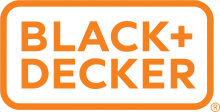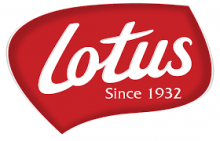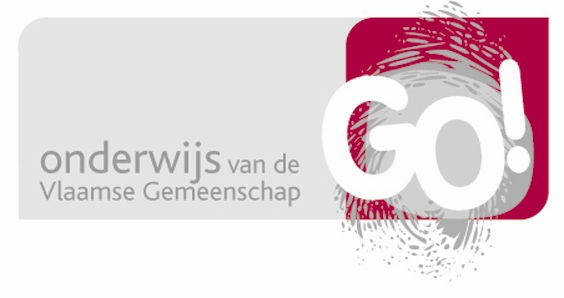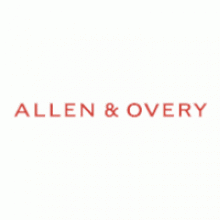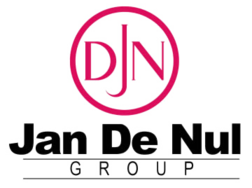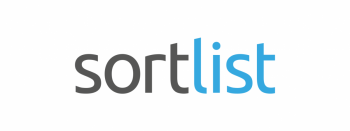Salesforce is the original gangster of software as a service (SaaS). By proving that a streamlined product and cloud-based subscription model could unseat established industry players, the company paved the way for SaaS as an industry.
How did they do it? In his tell all book ‘Behind the Cloud’ Salesforce founder and CEO Marc Benioff offers an inside tour of his company’s path to success (market cap: around $ 50 billion today!). Benioff shows that in the process of writing the book on building a SaaS company, Salesforce also wrote the book on PR for SaaS.
Today not a week goes by without someone writing a blog post about how SaaS founders should do their own “PR”. This vision of PR is usually narrowly defined as ‘media relations’ (and sometimes even narrower, as: writing e-mails to tech reporters who work for TechCrunch).
Benioff’s book, however, shows that the original titan of SaaS saw the value in a strategic approach to PR and illustrates 14 important PR strategies and tactics for SaaS startups.
Lesson 1: PR for SaaS is all about positioning
Ask many founders what a PR agency is good for and they’ll immediately tell you ‘pitching the press’. While that’s something any good PR pro should be able to do, Salesforce illustrates involving an agency on a more fundamental level can pay huge dividends.
PR, Benioff writes, is all about nailing down your story — and what you tell the media is just one aspect of how a company lives out that narrative:
Always ask yourself, ‘What’s my message?’ Position yourself either as the leader or against the leader in your industry. Every experience you give a journalist or potential customer must explain why you are different and incorporate a clear call to action.
Marc Benioff
What Benioff is talking about is that your vision, mission, values and positioning are crucial in launching your story.
PR for SaaS can be hard: you might have dozens of competitors, and your product basically consists of screenshots – not the most exiting thing to show to readers. What matters then, is that you have a compelling vision, and a convincing story about how your startup will change your industry.
Last year, Slack founder Stewart Butterfield echoed the same sentiment when he wrote:
Don’t underestimate the power of traditional media when you launch. It must be your primary concern, starting months beforehand and continuing for weeks afterward. Pull the strings you have. Work closely with your PR firm to find your hook. It can be personalities on your team, impressive customers you already have in the bag, prestigious investors, etc. But don’t leave it to two weeks beforehand and throw something together.
Source
When trying to communicate your mission, think about how to vividly get your message across – even if that means dressing up, says Benioff – and don’t be afraid to take your mission very, very personal:
I played the role of revolutionary at our launch party and even wore army fatigues because I needed to demonstrate that I was ready to lead our battle against the established software industry. As the founder of this mission, it was my job to walk the talk. Many CEOs are leery of getting too personal and are wary of inventing a mythical persona.
Marc Benioff
Notes Benioff: “Your ‘character’ must fit with your company’s story to bolster your brand. It must be heartfelt and authentic”.
Lesson 2: Building a brand is about more than creating a logo and advertising
Benioff knew that logos are important. That’s why Benioff had a logo designed – and why he added a sign saying “NO SOFTWARE” for good measure (even though his designers hated it).

But brand-building at Salesforce went way beyond the traditional approach of creating a logo and building some advertising around it. Benioff went looking for a specific personality for his SaaS. Every company becomes known for a set of facts, he says, and a company can’t own these facts. What you can own is a personality:
If the company’s facts (speed, price, quality) are superior to the competition, any good competitor will duplicate them, or worse, improve upon them. What a company can own, however, is a personality. We own NO SOFTWARE—not because we are the only one doing it but because we were the first to think it was important to customers. By consistently delivering an attitude that is future focused and pioneering, we have created a personality.
Marc Benioff, Salesforce
Lesson 3: Internal communication is a huge part of PR success
Apart from media and customers, PR for SaaS is also about internal communication, Salesforce’s experiences proves.
Your people are going to talk about the company, and you want them to do so in a consistent way. Here’s how Salesforce made that happen:
Everyone at our company needed to understand who we were and what we did. More important, they needed to be able to effectively relay it in one simple sentence to anybody who asked and everybody who would listen… To ensure that everyone was on the same page (literally), our PR firm, OutCast Communications, produced a two-sided laminated card. It was a marketing cheat sheet that stated in one sentence what we did.
Over time those laminated cards grew more sophisticated, incorporating the company’s vision, values and mission.
Like many of the most successful startups, Salesforce realized that being explicit to its internal stakeholders about vision, mission and culture was the best way to ensure that people internalized its culture – even before the company went into hyperscale mode.
Over time, Benioff used that vision, mission and values to create a SaaS management tool that would trickle down through the entire organization. He calls it a “V2MOM”, ‘an acronym that stands for vision, values, methods, obstacles and measures’. Every year, the entire company would fill in the following questionnaire:
Think about your overall organizational goals or a present-day challenge within your organization, and discover how you can outline the steps to succeed in your effort through the V2MOM process. You might have more than one answer to each question; be sure to prioritize your answers
Marc Benioff
- VISION (What do you want?): ________________________________________
- VALUES (What’s important about it?): ________________________________________
- METHODS (How do you get it?): ________________________________________
- OBSTACLES (What might stand in the way?): ________________________________________
- MEASURES (How will you know when you have it?): _________________________________
Lesson 4: Become a part of the industry narrative – by picking a fight
As a tiny upstart, there was no way Salesforce was going to get the press to ignore its giant competitors. But what it could do was try to hijack its competitor’s media attention.
Atlassian borrowed a page from Salesforce with their PR motto: “Make someone complain about you in the press”
No guerrilla tactic was beneath Salesforce.com to achieve this. In one instance, Salesforce sent a crew of mock protesters to a conference of Siebel, at that time the market leader in CRM solutions.
Here’s what happened next:
Twenty Siebel executives poured out (…) to investigate. A Siebel executive called the police, who immediately arrived to protect the protesters!
The police presence fanned the flames. The resulting hullabaloo helped attract an even larger audience, and the police couldn’t stop our mock protest because we were there legally. It was exciting to plan this attack, and the marketing team enjoyed watching the scene unfold from a stakeout car (…)
This marketing stunt worked across many fronts: we built salesforce.com morale, got great press coverage, and brought our competitor’s customers to our event to hear our message. Within two weeks, more than one thousand organizations signed up for our service; most were introduced to it through articles about the launch,” writes Benioff of the fake protest staged by Salesforce.

Salesforce.com consciously tried to weave itself into the very fabric of the industry by always attacking the industry leader – and it succeeded:
We meticulously planned so that anyone looking for Siebel always found salesforce.com. Eventually, when anyone thought about Siebel, he or she also thought about salesforce.com. The reality was that we were still the gnat on the back of an elephant, but our unusual tactics were making that elephant dance.
Marc Benioff
Several Saas startups, including Atlassian, have successfully used similar PR tactics since. Here’s how Atlassian describes the tactic: “Make someone complain about you in the press.”
Lesson 5: one idea is a tactic. But if you can execute it a number of different ways, it becomes a great strategy
Probably our favorite quote about PR is from the French philosopher Michel De Certeau. The quote is about the difference between “strategy” and “tactics” (bear with us, it gets a bit geeky here).
Here’s what De Certeau says:
Strategy needs a place that it can call its own and serve as the base from which relations with targets or threats can be managed. A tactic depends on time — it is always on the watch for opportunities that must be seized ‘on the wing’. Whatever it wins, it does not keep. It must constantly manipulate events in order to turn them into ‘opportunities’. The weak must continually turn forces alien to them to their own ends.
Michel De Certeau
What De Certeau says is that while strategists need a castle to live in, tacticians can live off the land, like guerrilla armies. This is the difference between PR and paid advertising.
Paid advertising depends on a ‘place that it can call its own’, namely ad space. Whether it’s newspaper ads, tv ads, text ads, or Facebook ads and sponsored posts: they’re all about buying a place and filling it with your message.
PR on the other hand, depends on setting a clear strategic goal (kill Siebel), and then seizing opportunities on the wing, forcing itself to find new opportunities day after day, week after week, year after year. The PR guerrilla doesn’t get to keep any wins. Tomorrow, he or she needs to find a new way to hurt Siebel.
As Salesforce proves, a band of guerrillas with a clearly defined goal and great tactical prowess can defeat a much larger opponent:
“One idea alone is a tactic, but if it can be executed a number of different ways, it becomes a great strategy.”
Lesson 6: Lines, not dots
VC Mark Suster memorably wrote that VCs don’t invest in “dots” – they invest in “lines”.
If you want to convince someone you or your company are on an upward trajectory, you’re going to have to give them multiple interactions — multiple data points or dots — to mentally join together into a line.
It’s not just VCs that operate this way. The same goes for media. Don’t expect to be able to approach journalists when you need them out of the clear, blue sky. Build a long term relationship with journalists, and try to add value to their work.
I… consider my relationships with journalists and bloggers to be a pivotal part of our marketing strategy.
The word relationships already implies that Benioff does not consider PR to be a number’s game. Too many SaaS founders think that they should blast their message over some kind of newswire to reach a maximum number of journalists. This achieves exactly nothing.
You are better off researching two or three journalists, and targeting your pitch specifically and personally to them. Frequently, when we pitch stories to media with SaaS founders, we send one or two e-mails. The success rate of these e-mails is well over 90 per cent. Why? Because we spend time doing our homework, getting to know the journalist’s work, their quirks, tweets and network.
In fact, with a list of just two dozen journalists, you can already be incredibly successful at PR, as Benioff proves:
I keep a list of about two dozen reporters whom I consider influential worldwide, and I pay extra special attention to them. I maintain my relationships with these individuals through in-person meetings and frequent contact. I ensure that it is simple for them to reach me. They have my direct contact information and do not have to go through our PR department to connect with me. I continually keep in touch by sending them information that I think would be helpful to them.
Journalists immediately think of me as a resource for a quote or comment because they know that I will be available to offer fresh insight and meet their deadlines. Relationships engender trust so that when I send out a memo or comment, these journalists are more receptive to it.
This also means getting back to them when they ask you for something. Here’s what Steve O’Hear, a TechCrunch reporter, recently tweeted:
Founders who only respond in a timely manner when they want something but not other way round. That. — Steve O’Hear (@sohear) October 8, 2015
Don’t be that founder.
Lesson 7: Thought leaders LEAD (and sometimes LEAK)
Salesforce knew that joining an ongoing conversation about your industry is a lot cheaper than buying ad space, and arguably much more effective.
A large part of our marketing and PR strategy is making sure that we always remain relevant. One of the ways we do this is by making ourselves available to discuss the direction of the industry. We don’t just sit around and wait for someone to call. If something happens that I can leverage, I immediately send a journalist an email with my comments or ‘leak’ an internal memo.
Anything marked “internal” will immediately pique the interest of journalists. Journalists are always afraid that your external, officially approved communication will be high on spin and low on truth. But they love to look inside a company through internal memos and e-mails.
Here’s how Benioff used that insight:
…when I heard that Microsoft (finally) announced that it wanted to enter the SaaS business with a CRM product, I fired off an e-mail to select journalists: “Well, it’s 7:29 A.M. in Singapore, and I just read that Microsoft announced a new offering to compete with us while I was asleep.” I included the interoffice memo that I had written (I’d done this before; tactics dictate strategy), and the San Francisco Chronicle ran an article about my response on its Web site. They included what I said in the e-mail and even reiterated their “favorite line” of the memo: “Steve Ballmer has publicly fretted that he would not be ‘out-hustled by anyone,’ but the fact is that Microsoft is being out-hustled by everyone.” Even better, they ran the entire memo in another section.
Lesson 8: learn to speak in metaphors (and take time to find good ones)
This seems like it’s almost too simple to need saying, but as any journalist can tell you, speaking in a clear, compelling, and even entertaining manner can really set a CEO apart, and make that journalist far more likely to call them for a story.
Benioff believes metaphors are the key to talking about new and sometimes complex topics in a way that gets your message across without putting the other party to sleep.
Metaphors are the simplest way to explain your services and communicate your message. Here’s how to do it: relate your product to something that is current and relevant and that everyone understands. (…) Creating these metaphors takes time up front, Journalists on deadline are too pressed for time to come up with their own metaphors, so they use the ones we supply. This further aids our effort to remain consistent and on point with our messaging.
Lesson 9: listen to MC Hammer
You might be a cutting-edge tech company, but that doesn’t mean you shouldn’t sometimes do things the old-fashioned way. Salesforce found that for building a community nothing beat an occasional face-to-face meeting.
After a meeting with MC Hammer (!), Benioff realised that he should invest in creating local teams of ambassadors – what MC Hammer called his “street teams”. Salesforce enlisted customers to become “Street Teams” who shared their product with others, offering uncensored commentary on its pluses and minuses:
MC Hammer, who visited our San Francisco office (wearing a business suit, not the trademark Hammer pants) and shared his “Street Team” concept: that of building local networks of people to back you. At the time, I didn’t know how salesforce.com Street Teams would work in action, but I thought that MC Hammer was a creative genius and that this unconventional idea was worth investigating.
Lesson 10: Create a bulletproof process to create word of mouth
Eventually, thinking about these communities made Salesforce.com realise that they needed an organised and structured way to create word of mouth.
Although every company knows that customer references are important, most companies have a lax approach to managing them, not giving references more focus than a bullet point on a marketing person’s to-do list.
“We examined what marketing methods most directly converted into sales and discovered two means that can be used effectively by any company,” writes Benioff. One of them was earned media. The other was ‘testimony: the word-of-mouth phenomenon created by customers sharing their success stories with their peers.’
This insight would lead Salesforce.com to build a platform where customers could weigh in on the roadmap of the software, and where they could share their experiences with Salesforce.com.
Lesson 11: Be ready for crisis (it will come)
If you’re a founder, you probably realise that Salesforce did not go from victory to victory.
Specifically, building a company on the internet means that you will have one of these two problems one day, and probably both:
- your system will have serious, headline grabbing performance issues
- someone will hack into your system and try to steal data and/or money from your customers
In 2005, the Salesforce platform crashed. Like many founders before him (and after him), Salesforce went into hiding: it tried to avoid those same reporters and media it spent so much time courting.
At the time, I felt that our public response was not our primary concern. I thought we needed to focus on improving the technology and to remain as low profile as possible until the problem was resolved… We stopped taking calls, and we stopped returning calls.
Despite the company’s closed mouth approach, the story spread like wildfire.
We realized that silence had been a terrible strategy. And it wasn’t just the decision not to talk that had been an egregious error, it was that we had not talked immediately.
To correct the error, Salesforce made its internal monitoring system public so everyone could see for themselves the moment the company was experiencing issues. It was a leap of faith for Salesforce, says Benioff.
At first I was hesitant. It made sense that customers would see what was going on in real time, but I didn’t think that our reliability information should be available to everybody. I worried that journalists and our competitors would use this information against us. Ultimately, however, I let go of my fear and realized that complete transparency was what we needed if we were to restore trust in our company.
Salesforce’s experience illustrates a central crisis communication truth: the best strategy – as proven time and again by all kinds of research – is transparency, especially in the case of malicious attacks.
Customers know that cybercriminals try to hack systems all the time. It’s not your fault. But what consumers hate is when you try to cover up problems because that is your fault. So create strong safeguards, but communicate proactively to your stakeholders when you have a data breach.
More importantly, create a crisis communication plan that details how you will handle such a crisis. What kind of information will you share and with whom? How will you check information? Who needs to sign off on external communications? Who can release information to the public? Who will be your spokesperson?
All these questions take time and emotional distance to get right, and those are two things that you won’t have in the midst of a crisis.
After these experiences, Benioff became a proponent of radical transparency:
I don’t think we would be thriving today had we not shifted to embrace more transparency. The difficult decision to launch the trust site—to open the kimono, as Bruce Francis called it—differentiated us. Transparency and trust became a strong part of our branding and identity.
Lesson 12: Make CSR part of the DNA of the company
A bit of an orphan child in business – especially startups – is the idea of “giving back”.
It’s hard to think about giving back when you feel that you have nothing to give. Salesforce managed it, and it provides a very inspiring example for startup founders. Benioff calls his approach to corporate social responsibility (CSR) the ‘1-1-1” model:
1 percent equity: using 1 percent of founding stock to offer grants and monetary assistance to those in need, especially to support youth and technology programs
1 percent time: finding meaningful activities for salesforce.com employees during their six paid days off a year devoted to volunteerism, and promoting a culture of caring
1 percent product: facilitating the donation of salesforce.com subscriptions to nonprofits, helping them increase their operating effectiveness and focus more resources on their core mission”
Marc Benioff
This is a beautiful CSR idea for any startup.
It’s affordable for any company. It involves the entire company. And to save you the math: 1 percent of 50 billion (Salesforce.com’s current market cap) is a whopping 500 million.
Lesson 13: Your stock ticker is also communication
Salesforce’s innovative approach to PR even incorporated its stock ticker. While most companies go with a ticker that is an abbreviation of their name, Salesforce took an entirely different approach:
We were unsure of what our NYSE ticker would be, and we spent a great deal of time trying to come up with what would best represent our company… I was debating a few choices, but not sold on any, when one of our bankers came to me and said, “What about ‘CRM’?” Right away we knew it would be a home run.
Lesson 14: the key to success is giving, rather than taking
Perhaps the most important takeaway for SaaS companies from Benioff’s book is also the most fundamental — great PR isn’t a narrow count of media mentions or stories placed. It’s all about building great relationships and having important conversations.
In short, he agrees with author and professor Adam Grant (whose work we covered here recently) that success is all about giving to others rather than getting for yourself. Here’s how Benioff sums up his path to success:
Through making all our stakeholders successful, we ignited our own success.
Photo credit: TechCrunch, Creative Commons (Flickr)












